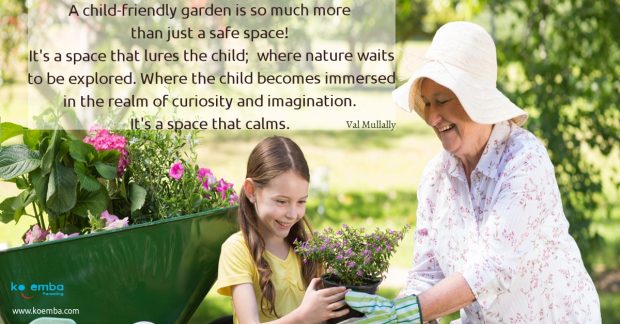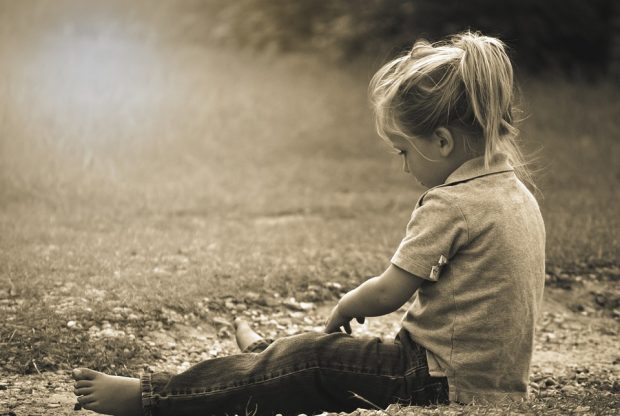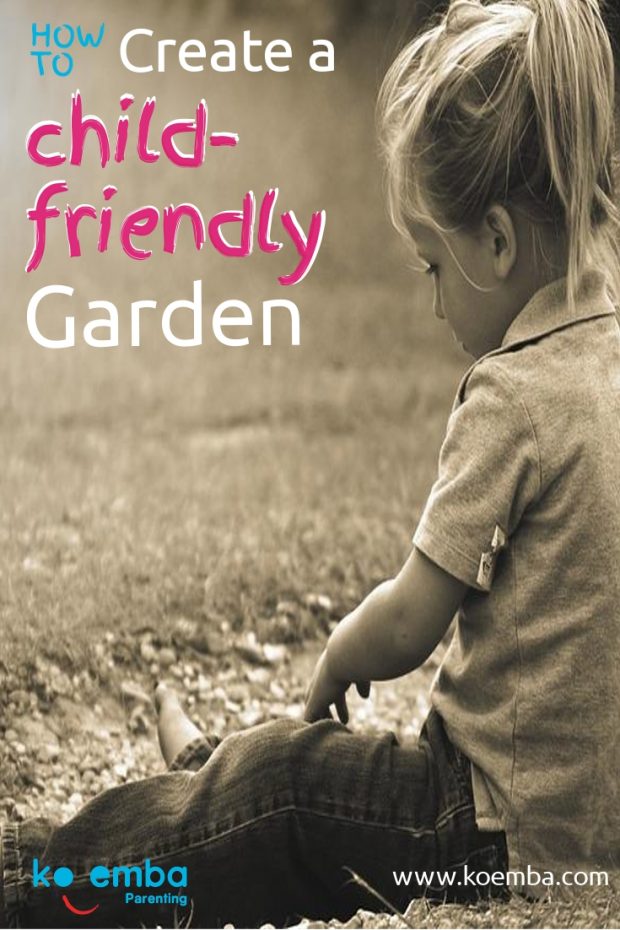You want your children to enjoy the sunshine and outdoor play. In this article, Val Mullally gives five practical tips on how to create a child-friendly garden.
You’ve probably ensured you have a child-safe’ garden – but is it a child-friendly garden? A child-friendly garden doesn’t need to be perfectly manicured. It’s a garden that calls to your child, “Come and play.”
What’s the difference between “child-safe” and “child-friendly”?
Safety is obviously important for your child’s sake – and creating a safe secure environment leaves your child free to play without unnecessary adult interference. What child wants a grown up saying – “Don’t do this/ don’t do that’” when they’re immersed in play! A child-friendly garden is always child-safe. i.e. no uncovered areas of water of any depth, no sharp corners that could cause harm. And a child-friendly garden takes into account the age and developmental needs of the child. A child-friendly garden will evolve as children grow. While some child-safe gardens will have little that attracts the child or holds interest for long, the child-friendly garden is a child-safe space that begs to be explored.
What is a ‘Child-Friendly’ Garden?
A child-friendly garden is something so much more than just a safe space! It’s a space that lures the child; where nature waits to be explored. Where the child becomes immersed in the realm of curiosity and imagination. It’s a space that calms.

No matter how pretty, children don’t want a flat garden that is immediately available to the eye on first encounter. Children need somewhere the imagination can wander. A place where stories can come to life.
A child-friendly garden is a place where there’s a sense of ‘magic’ – of mystery and wonder. A place where you can disappear into your own world of imagination – or wonder and curiosity, watching swaying leaves in sunlight, a bright ladybird on a leaf, or a bumblebee industriously collecting pollen. A place where you can create your own stories with your dolls or toy cars, where you can build a house for the hedgehog or fairy, or have a picnic or a tea party with invited guests (whether teddy bears, the child next door or mummy and daddy).
Children love gardens that are rich in natural textures, where there are leaves that will blow in the wind, where the land has hillocks and undulations, and sunlight dapples through the trees.
A garden where the child can lose herself in her imagination, where anything could be possible.
It’s a garden where there aren’t such perfect flower beds that she can’t tumble and roll on the lawn. It’s ideally not one level surface. It’s interesting to the senses!
A place that is attractive to all the senses – touch, smell, sight, taste, and hearing are all enticingly engaged. The warmth of the sun on grass and stones, the coolness of water and dappled shade, the sounds of wind-chimes and running water, the feel and smell of leaves, flowers and fruit, unexpected corners with new delights – these are all elements of a child-friendly garden.
Young children can have endless hours of imaginative play in a garden like this.
Five Tips to Create a Child-Friendly Garden Your Child Will Love:
1. Provide props to encourage play.
For example, props for your children to create a picnic, or to make a ‘tent’. Sometimes children will ask for the props they need – but wise adults will also be sensitive to when something extra is needed. Maybe it’s a bottle of bubbles to blow, or a temporary ‘clothes line’ and pegs for a morning of washing dolly’s clothes, or an old sheet to make a tent.
Farms, zoos and many adventures can be created with a few simple props.
2. Provide natural play materials.
Natural materials like water, sand, mud, stones sticks and plants provide a rich sensory experience for children. Different weights, textures temperatures, smells, ways fo being used. Water play is a much-loved activity – but be aware of any safety hazards. A sand area is also great. Earth, mud, stones, wood, and water are all part of garden play.
3. Create a safe (and enticing) garden – and give them freedom in that space.
Think back to your own favourite activities as a child. They were probably those times when you were free to create your own imaginative world, without an adult breathing down your neck. Young children need a child-safe garden with secure boundaries – and then give them space to create their own play, unless they’re inviting you to ‘join the party’.
4. Expensive play equipment isn’t needed.
Many parents buy elaborate climbing frames and other playground equipment – but when you walk through a neighbourhood notice how many of these are hardly used. Rather create space that can be used in many different ways. The large pieces of equipment that are likely to give endless hours of pleasure are a good swing and a trampoline. (If you have young children, create a low boundary in front and behind the swing, so that younger ones won’t walk into the path of the swing).
5. Create a simple veggie patch
Children are far more likely to eat the healthy stuff when they’ve grown and harvested the food themselves! And there’s so much to learn – not only about the plants, but about the soil, worms and insects, watering, waiting for things to grow, tidying up after yourself, working together.
Why do ‘Child-Friendly’ Gardens Matter?
A garden is ideally a place where you can just ‘be’.
A place where imaginations can bloom, where the senses can feast and muscles and brains can relax or be challenged in interesting ways.
Even older children can experience a garden like this as a sanctuary – a place to be still and unwind.
Where to Find Inspiration for A Child-Friendly Garden?
Pinterest is a great resource to discover how to create a child-friendly garden. Click this link to see my Pinterest board “Magical Gardens for Children”
Flower Shows are places where you can find inspiring ideas to bring the “magic” into your garden. Annual events like The Bloom Festival (Ireland’s answer to Chelsea Flower Show) are a fabulous outing and great places to get ideas on what makes a garden a place to nurture a child’s soul.
To discover more about the Koemba Parenting approach buy your copy of ‘Behave – What To Do When Your Child Won’t’, available on Amazon in Kindle and paperback.




No comments yet.